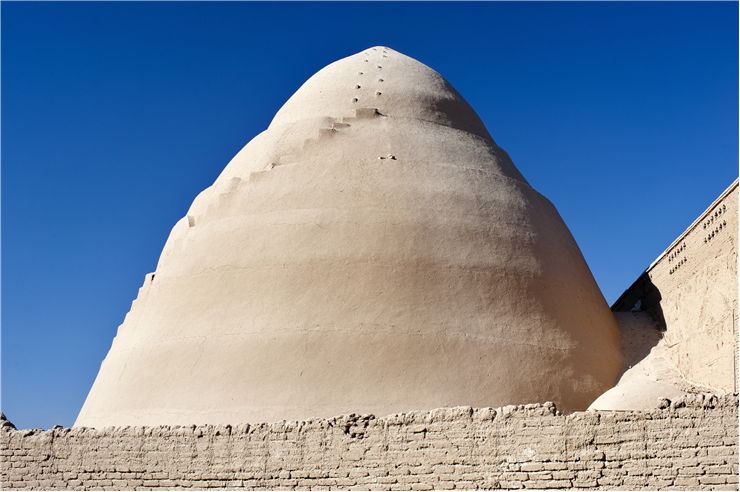Yakhchal - Ancient Type of Refrigerator
Most of the households in the world today have refrigerators but need to keep food on lower temperatures is not new. People harvested ice and snow as early as 1000 BC and there are written evidence that ancient Chinese, Jews, Greeks and Romans used to do this. But what people that lived in deserts did? Some of them, like Persians, built yakhchals.
Yakhchal is a type of evaporative cooler which cooled the air through the evaporation of water. It is made for the first time around 400 BC and is in fact a building made of a special mortar called sārooj, composed of sand, clay, egg whites, lime, goat hair, and ash which acts as an insulator. Above ground it is in a shape of a dome while it has an underground storage space which is used to keep ice or less often - food. It also has a wall that runs east-west. In the winter ice could be brought from nearby mountains and kept in the yakhchal throughout the year but more often the qanat water (water that was led by channels from the mountains) was channeled to the north side of the wall which was in shade. That produced more ice than ice harvesting. Thick walls of yakhchal dome (sometimes as thick as 2 meters) kept ice cold throughout the year. This insulation and the continuous cooling waters that spiral down its side, and combination a system of wind catchers and wind towers, keep the ice stored there in winter - frozen throughout the summer. These buildings also have a trench at the bottom to catch molten ice and allow it to refreeze during the cold desert nights. The ice from these buildings was then used to chill food during hot summer days and to chill treats like faloodeh, the traditional Persian frozen dessert. And this ice was not only reserved for royalties. Isfahan had many yakhchals and some of them were for private use. Shops preserved sherbets and fruit with ice and huge chunks of ice were carried by donkeys and sold everywhere. Ice could be also bought ice in the bazaar or straight from the yakhchal building. Yakhchals were the forerunners of modern-day thermal energy storage systems.
Some of these buildings were built so well that some of them stand even today. One of the yakhchals that still stands today is in Kerman, capital city of Kerman Province, Iran. It is is about eighteen meters high. But it is one of the rare surviving yakhchals. In time they were replaced with modern electric refrigerators, freezers and air conditioners because of many different reasons. First, electric refrigerators are cheaper and more practical. Desert storms eroded a lot of yakhchal buildings especially to the ones that were in the open in the desert regions. Also, ice that was formed in yakhchals was formed in the open and was often contaminated with dust which made it a health risk. Because of all of that it slowly faded from the use and was replaced with modern home and industrial refrigerators.
